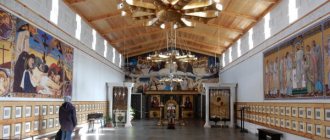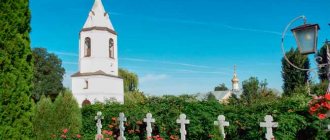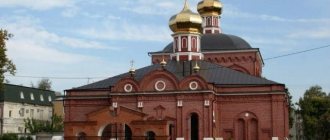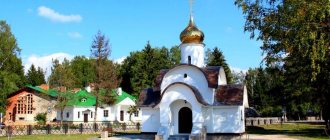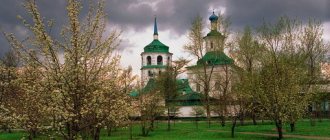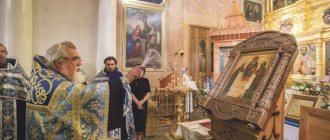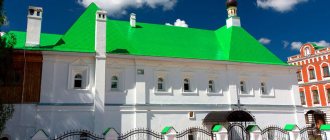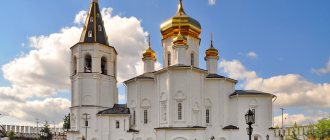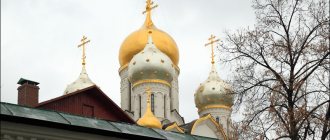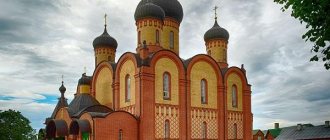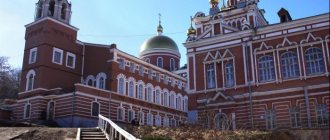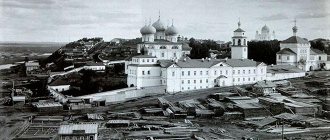Mir
Russia Samara Region Samara Iversky Samara Convent Map loading in progress...
{"format":"leaflet","minzoom":false,"maxzoom":false,"limit":50,"offset":0,"link":"all","sort":[""], "order":[],"headers":"show","mainlabel":"","intro":"","outro":"","searchlabel":"\u2026 \u0441\u043b\u0435\ u0434\u0443\u044e\u0449\u0438\u0435 \u0440\u0435\u0437\u0443\u043b\u044c\u0442\u0430\u0442\u044b","default":"","import-annotation":false,"width ":"auto","height":"350px","centre":{"text":"","title":"""link":"","lat":53.20043799999999833971742191351950168609619140625,"lon": 50.09956600000000292993718176148831844329833984375,"icon":""},"title":"","label":"","icon":"","lines":[],"polygons":[],"circles":[ ],"rectangles":[],"copycoords":false,"static":false,"zoom":8,"defzoom":14,"layers":["OpenStreetMap"],"image layers":[] ,"overlays":[],"resizable":false,"fullscreen":true,"scrollwheelzoom":true,"cluster":false,"clustermaxzoom":9,"clusterzoomonclick":true,"clustermaxradius":80, "clusterspiderfy":true,"geojson":"","clicktarget":"","showtitle":true,"hidenamespace":false,"template":"","userparam":"","activeicon": "","pagelabel":false,"ajaxcoordproperty":"","ajaxquery":"","locations":[{"text":"\u003Cb\u003E\u003Ca href=\"/palomnik/%D0% 98%D0%B2%D0%B5%D1%80%D1%81%D0%BA%D0%B8%D0%B9_%D0%A1%D0%B0%D0%BC%D0%B0%D1%80% D1%81%D0%BA%D0%B8%D0%B9_%D0%B6%D0%B5%D0%BD%D1%81%D0%BA%D0%B8%D0%B9_%D0%BC%D0% BE%D0%BD%D0%B0%D1%81%D1%82%D1%8B%D1%80%D1%8C\» title=\»\u0418\u0432\u0435\u0440\u0441\u043a\u0438\ u0439 \u0421\u0430\u043c\u0430\u0440\u0441\u043a\u0438\u0439 \u0436\u0435\u043d\u0441\u043a\u0438\u0439 \u043c\u043e\u043d\u 0430\u0441\u0442\u044b\u0440\ u044c\"\u003E\u0418\u0432\u0435\u0440\u0441\u043a\u0438\u0439 \u0421\u0430\u043c\u0430\u0440\u0441\u043a\u0438\u0439 \u0436\ u0435\u043d\u0441\u043a\ u0438\u0439 \u043c\u043e\u043d\u0430\u0441\u0442\u044b\u0440\u044c\u003C/a\u003E\u003C/b\u003E","title":"\u0418\u0432\u0435\u0440 \u0441 \u043a\u0438\u0439 \u0421\u0430\u043c\u0430\u0440\u0441\u043a\u0438\u0439 \u0436\u0435\u043d\u0441\u043a\u0438\u0439 \u043c \u043e\u043d\u0430\u0441\u0442 \u044b\u0440\u044c","link":"","lat":53.20043799999999833971742191351950168609619140625,"lon":50.099566000000002929937181761488318443 29833984375,"icon":""}],,"imageLayers":[]}
53.200345; 50.099412
Russia, Samara, Volzhsky prospect, 1k5
Samara, Samara region 443010
Russia
Telephone.:
8(846) 332-37-14.
Iversky Convent
- an Orthodox convent of the Samara and Syzran diocese of the Russian Orthodox Church, operating in the city of Samara.
History[edit]
In 1850, a women's religious community was founded in Samara, which received imperial approval in 1855. Thanks to its successful development and growth, in 1860 the community was transformed into a monastery, which by the beginning of the 20th century was home to about 400 nuns and novices. The monastery operated a hospital, a school, and various workshops, in which the famous Samara Banner was made, among other things. Divine services were performed in three monastery churches, in which the shrines revered in Samara were kept: the image of the Mother of God “Jerusalem” and the image of the Mother of God “Iverskaya”, which gave the name to the monastery. About a thousand people were buried in the monastery cemetery, including many eminent citizens. The monastery was a significant architectural ensemble that largely determined the appearance of Samara, especially from the Volga side.
After the establishment of Soviet power, the monastery existed for some time under the guise of a sewing artel, but first all valuables were removed from it, and in 1925 the monastery was closed. In the early 1930s, the monastery Assumption Church, the second largest temple in Samara, was blown up, and residential buildings were built in its place. The bell tower, the monastery fence, and some buildings were also destroyed, the cemetery was devastated and desecrated, various organizations were housed in the surviving churches, and the buildings were transferred for housing to workers of local enterprises.
The revival of the monastery began in 1992, when the preserved churches and part of the surviving buildings, recognized as an architectural monument of regional significance, were transferred to the established monastery parish of the Orthodox Church. The monastery churches were restored and restored, the monastery bell tower was restored in its original place, preserving the appearance of the 19th century, a new church-chapel was built, and security and rescue work was carried out in the monastery necropolis. Currently, the monastery has a library for parishioners, gold-embroidery and icon-painting workshops. In 1999, Patriarch Alexy II of Moscow visited the monastery; since 2001, the monastery has kept the relics of the locally revered saint Alexander Chagrinsky.
What to see in the Iversky Monastery
The monastery is located on the high left bank of the Volga and is fenced with a new stone wall. Previously, the entire territory was divided into two parts - the upper
(larger) and
the lower one
- the main road connecting the Saints and exit gates. When today we enter the territory of the monastery through the Holy Gate from the end of Frunze Street, we see only the lower part (on the left), because the upper part (on the right), in addition to the restored Iverskaya Church, was built up with residential buildings during the Soviet period.
In that upper part, the largest and most beautiful monastery church, Sretensky
(architect K. Maker). The height of this beautiful building in pseudo-Byzantine style was more than 40 meters. The temple was five-domed, three-altared, with white marble walls and multi-tiered carved iconostases, but it was a “cold” - not heated temple.
Sretensky Church and bell tower at the beginning of the 20th century
However, before the appearance of the Cathedral in Samara (also dismantled in the 30s of the 20th century), Sretensky was the most visited and beloved religious building among the townspeople. It was blown up in the 30s. Now, instead of it and the monastery necropolis, there are residential buildings.
Bell tower
The first thing everyone who enters the monastery territory sees is, of course, the slender bell tower with the gate church of St. Nicholas.
Bell tower
For a long time, the Iversky Monastery did not have its own bell tower. The belfry was a group of bells mounted on four pillars. There was no money for the construction of the bell tower, because the construction of temples, buildings, and workshops was underway, which required large investments. But thanks to the great financial assistance of parishioners, which was expressed both in monetary terms and in the donation of large quantities of bricks, things moved forward.
And at the end of the 70s. 19th century
the main monastery gates were decorated with a slender and majestic 65-meter five-tiered and single-domed stone bell tower.
The bell tower of the monastery at the end of the 19th century
The Iverskaya Bell Tower, immediately after its construction was completed, became a recognized symbolic decoration of the city, its “calling card”. Its middle part, according to tradition, was provided for the location of the Church of St. Nicholas
. The top of the bell tower was decorated with an octagonal drum with narrow windows and a dome with a cross.
A new bell tower, replacing the one destroyed in the 30s, appeared in the monastery by 2011
with new 15 bronze bells, cast by Voronezh bell makers, and with chimes that have modern technical control.
Bell tower illuminated at night
The bell tower, which today greets tourists at the entrance to the monastery territory, is an exact copy of the one destroyed under Soviet rule. And just like the destroyed one, the new bell tower remains a beautiful city landmark, visible from various points in the city and from the Volga. Today's building is equipped with modern night lighting and is very impressive at night.
Church of St. Nicholas
During the construction of the monastery bell tower in its middle tier, according to the tradition of the Russian Orthodox Church, a gate temple
, dedicated to Nicholas the Wonderworker. This small temple was also completely built and equipped with funds from benefactors.
Worship cross
Behind the bell tower there is a stone Poklonny cross to Cyril and Methodius (author V. Klykov, A. Ivanovich
).
This symbol of faith is made in the form of a solar circle, in the center of which is the image of Christ
. Above it is the Holy Trinity, and on both sides are images of John the Baptist and the Virgin Mary.
This cross serves as a monastic amulet and a place where you can pray at the exit or entrance to the monastery.
Iverskaya Church
Further, on the right side of the main alley, there is the main liturgical building - the Temple of Our Lady of Iveron
.
Iverskaya Church
The building that appears to the tourist eye to the right of the main alley is the second
Iversky Temple.
The first one - wooden - was located lower and was quite simple in execution (like a chapel). Rebuilt several times, it served for almost 30 years, and in its place today is the Jerusalem Temple.
Jerusalem Temple on the site of the first Iveron Temple
And the new Iverskaya two-altar stone church was built in the 80s of the 19th century
, just above the wooden one, across the main road, and to make room for its construction, a significant part of the mountain was razed.
In parallel with the temple and connected to it by a corridor system, the abbot's building was also built. Therefore, the appearance of the church building resembles a parallelepiped
.
Unlike the Sretensky Church, Iversky was “warm”
, but rather modest in outdoor decor. Its top is crowned with a massive dome with a drum of ten windows ending in a small dome. From the side of the main alley, an open terrace stretched along the entire façade.
Dome of the Iversky Temple in Samara
Interior design
The temple was rich before the revolution.
Carved oak gilded iconostases in the Rococo
were made by Siberian craftsmen.
The icons were painted by Palekh icon painters
. The floors were made of parquet. Unfortunately, all this splendor was lost when it was placed in the Samaraobloobuvbyt church building during the Soviet creative period.
After the return of the Iversky Church to the diocese, the building was so unsuitable for existence that they even thought about building a new church. However, the eyes are afraid - the hands do. Work was carried out to strengthen the foundation, wall supports and support the dome. Then restoration
work
, painting the walls, and installing a new four-tier iconostasis with icons.
Interior painting
Most of the wall scenes are dedicated to the Mother of God
.
The central compositions reflect the most important moments of her life - the Nativity
of Christ and
the Assumption
of the Virgin Mary. The central altar is given to the image of the Iveron Mother of God. The pillars installed to support the dome are painted with full-length figures of martyrs.
From the Iverskaya Church you can go down to the former monastery necropolis and the Jerusalem Temple.
Necropolis
Steep slope running down from the road, from the second half of the 19th century
was occupied by a monastic necropolis for the laity, to which a stone staircase led. The cemetery for clergy was located near the destroyed Sretensky Church (in the upper part), and remained under the residential buildings standing there today.
Staircase from the Iversky Temple of the Iversky Monastery to the Necropolis
Today, only a few burials have survived from the lower necropolis, the main one of which is the tombstone of Peter Alabin
. The former governor of the city, who earned the title of honorary citizen of Samara, put a lot of effort into the prosperity of the city and the development of this monastery. The sisters of the monastery maintain his grave with due veneration and respect.
The grave of P. Alabin in the Iveron Necropolis
In the 90s
rescue and restoration work began in the Iveron necropolis, which was recognized as a protected historical heritage site of Samara.
After studying metrical and archival materials and carrying out excavations
, it was possible to identify most of the burials. The discovered and identified remains of representatives of noble families, merchants, military and officials, representatives of culture and art were reburied within the boundaries of the revived necropolis.
Restored Necropolis
Just below the necropolis area is the Pilgrimage Center
, i.e.
hotel for those arriving for prayers. But next to the burial place of P. Alabin there is a new monastery building - the Chapel of the Royal Passion-Bearers
.
Chapel-Temple of the Royal Passion-Bearers
In the 90s
When the revival of the monastery buildings began, in addition to the restoration of the previous, preserved religious buildings, this new temple building appeared on the territory of the monastery, which immediately became the architectural dominant of the revived complex.
Chapel-Temple of the Royal Passion-Bearers
The white and red small building that appeared in the central part of the monastery personifies the historical past of the Iversky Monastery, which began its existence with a chapel, which in the mid-19th century served as both a place of prayer and housing for nuns. Therefore the new temple is also a chapel
.
This single-domed brick temple was erected at the expense of the local city budget in
the Russian style
.
Under his altar lies soil brought from the site of the martyrdom of the family of Nicholas II
. The memorial plaque in the chapel also reminds of their murder.
Entrance to the territory of the Temple-Chapel and Necropolis
The painting of the iconostasis in the church-chapel was done by the monastery sisters themselves. The iconostasis recalls the historical events of the change of state regime in the country. Icon "Sovereign"
- the date of its acquisition (March 2, 1917). That was the period of the beginning of the whole chain of terrible and bloody events that shook Russia.
The second icon is an image of the newly martyred family of Nicholas II, who died in the whirlpool of the revolutionary upheaval. The famous Samara banner (a copy) is also kept in the temple. In the future, it is planned to create a museum area in the chapel, telling about the main milestones of history
Iversky Monastery.
“Bulgarian liberators with the Samara banner. 19th century
And near the chapel, a necropolis is again formed from the burials of clergy. As they say, everything “returns to normal.”
And a little further along the path there is also one restored in the 90s. last century Jerusalem Temple.
Jerusalem Temple
This stone temple, which has a common refectory
and the throne
of the Jerusalem Icon
, was erected on the monastery territory for the 50th anniversary of the monastery (arch. T. Khilinsky), i.e.
at the beginning of the 20th century
. The construction of this temple, like most of the monastic buildings, was carried out with voluntary donations from Samara merchants and nobles.
Jerusalem Temple
And the Jerusalem Temple was built in 1903 on the site of the first warm three-altar wooden Iveron Church that previously existed here, which functioned in the monastery from 1855 to 1901, and in the foundation of which a very small limit of the Jerusalem icon
.
This limit existed on the northern side of the temple, and on its southern side at one time there was the Elena-Varvarinsky
limit, built by the city governor Pyotr Alabin in memory of his deceased wife and daughter.
Subsequently, the wooden Iveron Church was dismantled due to its disrepair, especially since the new “warm” Iveron Church already stood a little higher. Therefore, instead of the dismantled first monastery church, the Jerusalem Temple appeared, intended for common meals, which is why it is often called the refectory
.
Iveron Temple, bell tower and Jerusalem Temple
This is a nine-domed temple. Due to the fact that its main purpose was the Refectory, economic departments of a bakery, kvass brewery and others were set up on the lower floor.
During the Soviet period, the temple building was actively used - it housed the Watermen's Club
, which used the altar as a stage, a shoe factory and communal apartments.
Later, the temple premises were occupied by the House of Science and Technology
. Thanks to this, the Jerusalem Temple was relatively well preserved and was the first among the restored and revived churches of the monastery in the 90s of the last century.
Rotunda of the Iversky Monastery
Further along the lovingly landscaped territory you can walk a little up to the holy water Rotunda
, along the way admiring the numerous flower beds and enjoying the peace and quiet, which is not disturbed even by the close proximity to the Zhigulevsky brewery.
Author of the article: Kasatkina Tatyana
Shrines
As already mentioned, one of the main shrines of the Iversky Convent is the Iverskaya Icon of the Mother of God - a family heirloom, once donated by the merchant Marikhina.
The Iveron Icon of the Mother of God is the main shrine of the Samara Iveron Monastery
In addition to this image of the Mother of God, there is also a Jerusalem image of the Mother of God in the monastery, which is considered miraculous. It is known that one of the first nuns of the temple even compiled a list of those miracles that were performed by turning to the icon, but during the difficult years, when the monastery was destroyed, this list disappeared.
The monastery also contains a small number of icons with the relics of saints - Tikhon of Zadonsk, Matrona of Moscow, as well as particles of the holy relics of John the Baptist, Apostle Andrew the First-Called and Mary Magdalene.
Iversky Monastery (Samara) in the past and today
The monastery was built on the steep bank of the Volga and occupied almost seven acres of land. A high whitewashed stone wall with chapel-shaped towers at the corners surrounded it on all sides. A road ran through the territory of the monastery from the Saints to the exit gate. It divided the territory into two parts - the larger one was at the top of the hill, the smaller one at its foot.
By 1905, there were twenty-two buildings on the territory of the monastery. Some of the buildings were stone, two buildings were wooden, lined with brick. The remaining rooms were built of wood on stone foundations and covered with planks on the outside. The buildings were predominantly painted brown and yellow and were roofed with iron.
The buildings were located both in the upper and lower parts of the monastery, and quite symmetrically. The Iversky Convent had its own school, hospice house, and hospital. There was also a water supply system that supplied water to the monastery buildings, as well as to the clergy’s house, located at the intersection of Saratovskaya and Aleksandrovskaya streets.
The monastery owned 1,130 acres of land. Of these, 835 were allocated for plowing, 150 were occupied by meadows, 120 dessiatines located on the right bank of the Volga were occupied by forests and a lime quarry, another 23 dessiatines were allocated to orchards. At the beginning of the 20th century, the monastery had on its farm 25 horses for travel and work, 60 sheep, 40 heads of cattle.
With the beginning of the revival of the monastery, the Iversky Monastery (Samara) received land with an area of less than one hectare (0.79 hectares), which amounted to about 10% of the land that once belonged to it. But gradually the monastery’s possessions expanded, eventually amounting to about half of the original ones, but most of the former territory of the monastery today is occupied by residential buildings.
To replace the previously lost property, the monastery was given the territory of a labor camp in 1995, which was located 40 km from Samara (Volzhsky district). A temple was built here in the name of the Holy Spirit and a monastery courtyard was created. Today, the monastery houses icon-painting and gold-embroidery workshops, reviving the traditions of ancient craftswomen, and a huge library for parishioners.
By the beginning of the 21st century, sixty-five nuns already lived in the reviving monastery, among them ten nuns, three schema-nuns, thirty novices and twenty-two nuns. Eight people lived in the monastery almshouse.
Samara Banner
In 1876, according to the sketches of the artist N. E. Simakov, the nuns embroidered a banner. One side of the panel in the center was decorated with a gold embroidered Byzantine cross with the image of Cyril and Methodius, the other - the image of the Iveron Mother of God, also in a Byzantine cross.
With this banner, at the end of April 1877, Samarans saw off the militias who were going to Bulgaria to help liberate themselves from the Turkish yoke. Under this banner, in June 1877, the Bulgarian squad bravely fought near Stara Zagora. During the bloody battle, five standard bearers replaced each other. The broken but not defeated banner was taken from the battlefield, and immediately after the liberation of Bulgaria it took pride of place in the Sofia Museum of Russian-Bulgarian Friendship.
Interestingly, in 1981, the Bulgarians made an exact copy of this cloth and gave it to Samara.
How to get there?
Finding the main attraction of the city is easy. The Iversky Monastery (Samara, address: Volzhsky Prospekt, 1) can be visited if you take bus No. 11 from the Alabinskaya metro station and go to the Iversky Monastery stop. From the train station you can get to the attraction by minibus (stop “Ulitsa Frunze”). And one more piece of advice: on church holidays, you must first find out the schedule of services that are held in the monastery. The telephone number of the Iversky Monastery (Samara) can be found on the official website.
Monastery territory
The territory of the monastery, on the one hand, resembles the Moscow Kremlin (blue spruce trees against the backdrop of churches), on the other, a workers’ town. The residential buildings of the monastery are similar in style to the factory ones, and the chimneys of the Samara State District Power Plant give the complex an even more urban spirit. Somehow, inopportunely, the Zhigulevsky brewery adjoined the blissful place.
There are several temples here. Strict Jerusalem with massive carved doors, a fancy chapel, contrastingly painted in white and red, golden-domed Iveron with a majestic facade. Near it they are building a copy of the destroyed bell tower, under the 8-ton dome of which there is a belfry of 15 bells.
The cemetery with the remains of eminent and honorable citizens of Samara was destroyed in the post-revolutionary years, and now is a pile of tombstones. A walk along it is recommended not for aesthetic, but for educational purposes.
Current state
Today there are several restored churches, a bell tower, 2 sisters’ buildings, a rector’s and a guest building, a refectory church, and a worship cross in memory of Cyril and Methodius.
Also, a necropolis was reopened on the territory, where eminent Samara residents were reburied, a monument to the public figure Alabin and the grave of Archpriest John Bukotkin were erected.
There are several workshops on the territory of the monastery:
- Zolotosveynaya: it was located here before the revolution and was revived after the 90s;
- Sewing: mainly vestments for priests, cassocks and clothes for the nuns themselves are sewn;
- Icon painting: the sisters do everything themselves, they also restore the icon;
- Publishing: this is a new but promising direction. A monthly newspaper, booklets, symbols and albums dedicated to the monastery are printed here.
At the beginning of the 21st century, 65 nuns live on the territory, including 10 nuns, 30 novices, 22 nuns and 3 schema-nuns.
Monastic grounds
In February 1861, in accordance with a government decree, the Iversky Monastery (Samara) received the meadows requested by the abbess, as well as permission to fish. These lands were located very close to Samara and previously belonged to the Spaso-Preobrazhensky convent, so the Iverskaya monastery was considered the heir of the abolished monastery.
The request to allocate a flour mill to the monastery, which was supported by Bishop Theophilus, was not granted. Disappointed by the government’s refusal, the head of Samara, together with one of the regular donors of the monastery, merchant V. Bureev, transferred to the monastery a plot of land leased from the city for ninety-nine years, adjacent to the monastery meadows.
An orchard with cherries and apple trees was planted on this site, a huge raspberry garden was planted here, and vegetables began to be grown: potatoes, cucumbers, cabbage. The cut hay was also brought here. For the convenience of farming, a farm was built on the site, in which fifteen sisters, as well as hired workers, permanently lived.
There were two cemeteries at the monastery, where clergy, family nobles and famous people in the city were buried. Only the grave of P.V. Alabin, the mayor, has survived to this day.
Patronal holidays
The main patronal feasts, when additional services are held in the monastery, are usually associated with those shrines that rest in the monastery churches:
- February 25 and October 26 - veneration of the Iveron Icon of the Mother of God;
- January 4, October 15 and June 22 are the days when the holy righteous Alexander Chagrinsky is venerated;
- December 19 and May 22 - veneration of St. Nicholas the Wonderworker;
- October 25 - veneration of the Jerusalem Icon of the Mother of God.
Monastic way of life
The life of the nuns was not very diverse: the main task was prayer. It was divided into church or general and home: nuns along with icons were invited to perform the ceremony in homes.
See also: Church of St. Nicholas the Pleasant in Khamovniki: the history of an Orthodox shrine of the 17th century
Women also carried out obediences: they read the psalter, prepared food and prosphora, did needlework (sewing, icon painting), taught at school, looked after the sick, and sang in the choir. In addition to generally useful tasks, women worked “for themselves”: clothes, light and heat were paid out of their own pockets.
This is interesting: local nuns embroidered the Samara banner, which was transferred to the Bulgarians in the Russian-Turkish War.
Today's life is practically no different from that described above. The only exception is the need to conduct excursions and receive pilgrims.
Period of religious persecution
In the years following the October Revolution, the monastery shared the fate of many Russian monasteries. In 1919 it was stripped of its status as a religious institution. Of the ten residential premises, most were given over to communal apartments for employees of local enterprises.
Individual church buildings, originally provided for worship to the local Orthodox community, were repurposed for economic needs, and the central monastery church - the Assumption Cathedral - and its 65-meter bell tower were blown up. The Iversky Monastery (Samara) interrupted its activities for many years. The schedule of services of those years testified only to the continuation of prayer service within the framework of the religious community, while the monastery itself was abolished.
Refectory Church
The Iversky Monastery (Samara) celebrated its fiftieth anniversary in 1900, and in the fall of this year Feofania (the abbess) petitioned Bishop Gury for permission to build a new refectory church for the monastery’s anniversary. The new temple was founded in 1901. At the place where the construction of the throne was supposed to be built, a wooden cross was installed, and holy relics were placed in the foundation of the apse, covered with a copper board with the date of its foundation carved on it.
Construction work was carried out according to the design of the architect T. S. Khilinsky. On the lower floor of the church there was a brewery, a bakery, as well as grave crypts; on the upper floor there was a refectory church with a throne. Its consecration took place at the end of September 1903. The preserved chapel from the previous church in the name of the Great Martyr Varvara and Queen Helen remained a chapel in the new one.
In 1925, after the closure of the temple, it housed the watermen's club, then the House of Science. Since 1992, it was reopened and became the first in the reviving monastery.
Creation of a women's community
The founding date of the monastery is considered to be 1850, when a chapel was built in which all-night vigils were held. To send them, the parables of two churches that then existed in the city were used - the Kazan Cathedral and the Trinity Church. Over time, eight cells were built around the chapel, in which those who wanted to devote their lives to serving God settled.
From these first nuns, a small community was formed in 1852, for the care of which a priest was appointed. The pious maiden Maria Yanova became her abbess. This choice was very successful, since she subsequently proved herself to be an energetic and talented organizer. Thanks to her work, an intensive process of community development began.
The need to create a monastery
To counter such phenomena, it was necessary to create a powerful stronghold of true Orthodoxy. For this purpose, the residents of Samara turned to the Holy Synod with the initiative to open a convent in the city, designed for about a hundred nuns. Having supported the idea of the Samara people, the leadership of the Synod, however, demanded specific information about what funds were planned to be used to build the monastery.
This problem was solved in the old proven way - they announced a collection of donations among the city residents for the construction of the monastery. Particularly respected and religiously minded citizens of the city formed a board of trustees, which took over the organizational part of the enterprise, and several of the richest representatives of the city society made large monetary donations and, importantly, allocated land plots belonging to them for the construction of the monastery.
Iversky Temple
The first church in the monastery was a warm wooden three-altar church, which was consecrated on April 24, 1855 by Eusebius, the first Samara bishop. The construction work was led by the architect Firsov. The temple was built on a high stone foundation and had an oblong shape. It was sheathed with planks and covered with iron. The temple had 13 windows, but despite this, it seemed quite dark, since it was shaded on both sides by hills.
The church had a two-tier iconostasis, with gilded carvings on a white background. It was created at the expense of Vasily Golovachev, a merchant from Samara. The Iveron icon was located on the left side of the royal gates, and the Jerusalem icon was behind the left choir.
Fortress Samara town
Nowadays Samara is one of the largest cities in the Middle Volga region. Its history goes back more than four centuries. In 1586, during the reign of Tsar Fyodor Ioannovich, a fortress, the Samara town, was founded on the Volga bank. The time was turbulent, so a guard stronghold was needed to block the path of the steppe nomads. There also arose a holy monastery, called the Spaso-Preobrazhensky Convent. The warriors stood with weapons in their hands at the border of the Russian land, and the monastery sisters offered prayers for the overcoming of the adversaries.
This continued until 1764, when the monastery was abolished due to the small number of nuns. The absence of a spiritual center so necessary for life could not but have an impact. In the first half of the next century, the 19th century, trends towards church schism intensified in society. In addition, various sects became widespread, the most active of which were representatives of the so-called Molokan heresy.
